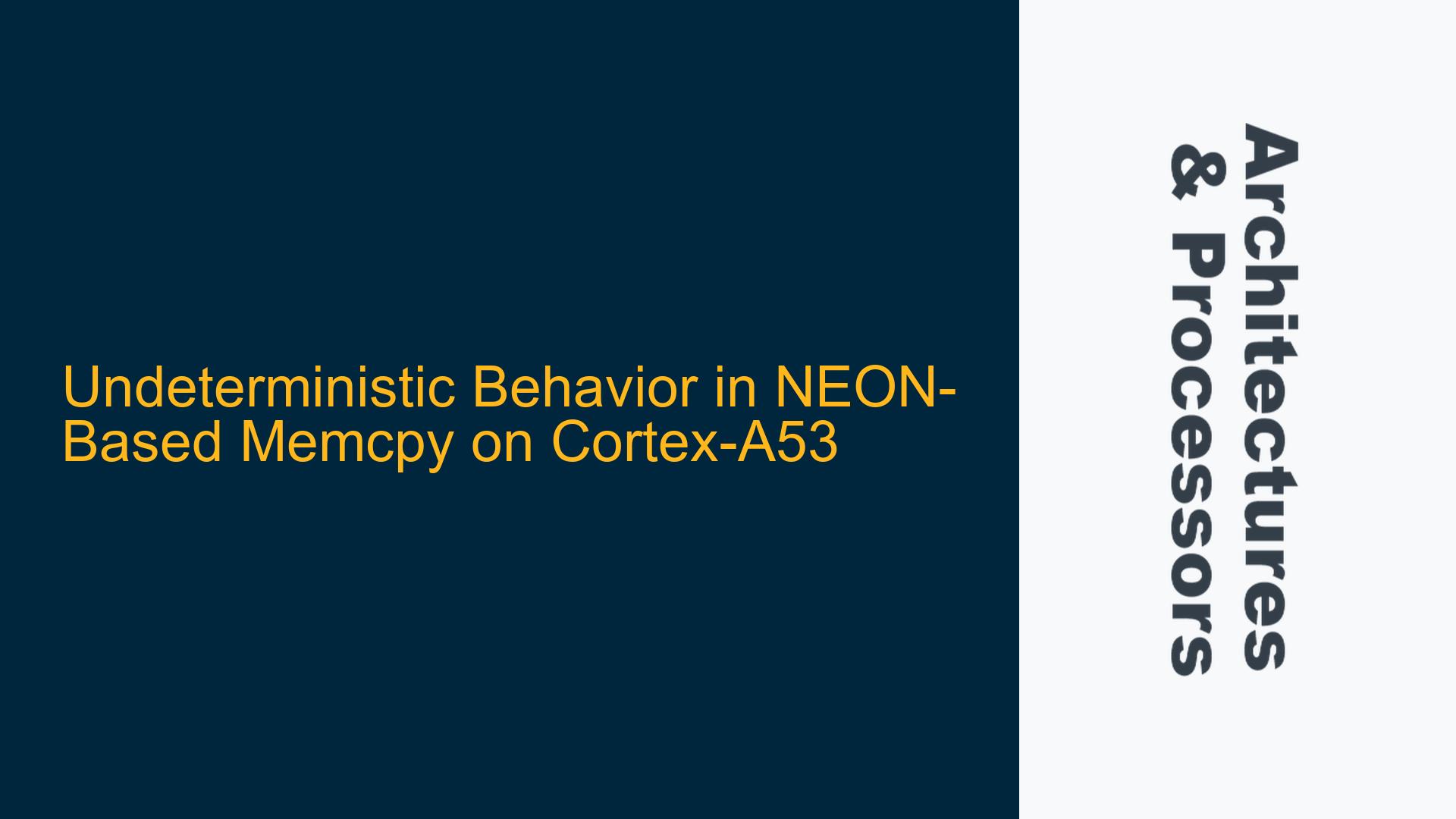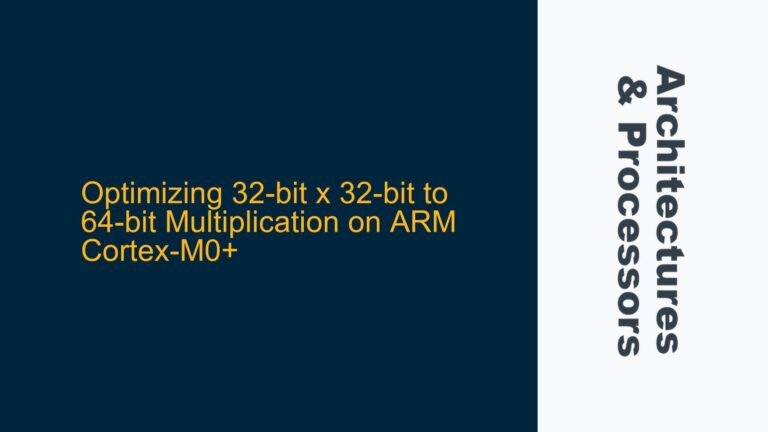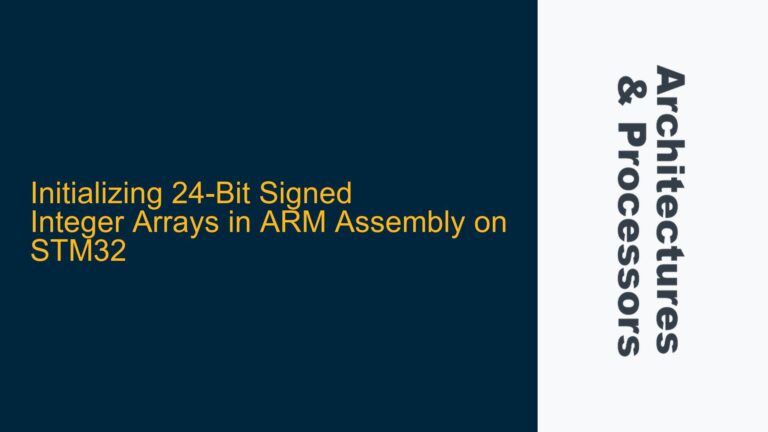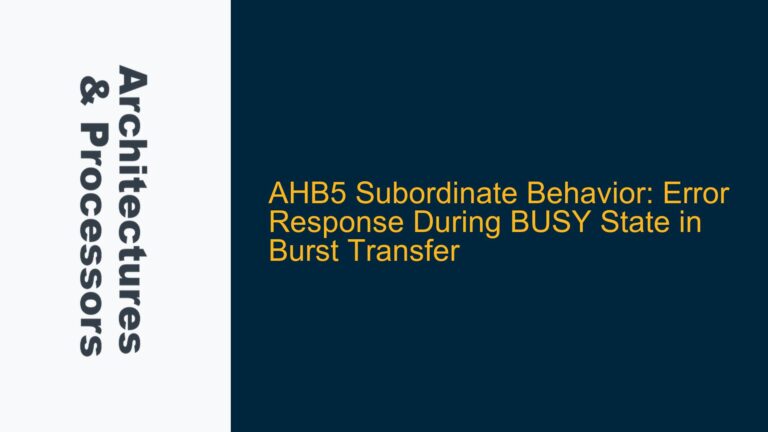NEON Register Usage and Memory Alignment in Optimized Memcpy
The core issue revolves around the implementation of a high-performance memcpy function using NEON registers (q0 and q1) on a Cortex-A53 processor. The function is designed to leverage 256-bit (32-byte) memory alignment to maximize data throughput, as the AXI Interconnect on the SoC supports 128-bit accesses. The function performs well under most conditions, achieving a 70% performance improvement over the original implementation. However, sporadic errors occur during data copying, specifically in 16 or 32-byte chunks, when the function is compiled with the highest optimization level (-O3). These errors do not manifest when the function is compiled without optimization (-O0), but the performance is significantly degraded.
The function operates on uncached RAM, and the errors are consistent with misaligned or improperly handled NEON register accesses. The issue is particularly puzzling because the memory alignment checks and NEON register usage appear correct at first glance. The problem is exacerbated by the sporadic nature of the errors, making it difficult to isolate the root cause without a detailed analysis of the compiler’s behavior and the interaction between the NEON registers and memory.
Missing NEON Register Clobber Declarations and Compiler Optimizations
The primary cause of the undeterministic behavior lies in the improper handling of NEON registers within the inline assembly code. When using inline assembly in GCC, it is crucial to inform the compiler about the registers being modified (clobbered) to ensure that the compiler does not make incorrect assumptions during optimization. In this case, the NEON registers q0 and q1 are used in the ldp (load pair) and stp (store pair) instructions, but the compiler is not explicitly told that these registers are being modified. This omission leads to undefined behavior when the compiler optimizes the code, as it may assume that the contents of q0 and q1 remain unchanged across the inline assembly blocks.
Additionally, the use of separate asm volatile statements for loading and storing the NEON registers can lead to subtle issues with instruction reordering. The volatile keyword ensures that the compiler does not remove or reorder the assembly instructions, but it does not prevent the compiler from making incorrect assumptions about register usage. This can result in the compiler generating code that inadvertently overwrites or misuses the NEON registers, especially at higher optimization levels where the compiler aggressively reorders instructions to improve performance.
Another potential cause is the alignment of the source and destination pointers. While the function checks for 256-bit alignment, there may be edge cases where the alignment is not properly enforced, leading to misaligned memory accesses. Misaligned accesses can cause data corruption, especially when dealing with large data blocks and high-performance memory subsystems like the AXI Interconnect.
Correcting NEON Register Usage and Ensuring Memory Alignment
To resolve the undeterministic behavior, the following steps should be taken:
-
Declare NEON Registers as Clobbered in Inline Assembly
The inline assembly code must explicitly declare q0 and q1 as clobbered registers. This informs the compiler that these registers are modified by the assembly code and prevents the compiler from making incorrect assumptions during optimization. The corrected assembly code should look like this:asm volatile ("ldp q0, q1, [%0]" : : "r"(psrc) : "q0", "q1", "memory"); asm volatile ("stp q0, q1, [%0]" : : "r"(pdst) : "memory");The
memoryclobber ensures that the compiler does not reorder memory accesses around the inline assembly blocks, which is critical for maintaining data integrity. -
Combine Load and Store Operations into a Single Assembly Block
To further reduce the risk of instruction reordering, the load and store operations should be combined into a single inline assembly block. This ensures that the compiler treats the entire operation as an atomic unit, preventing any intermediate optimizations that could lead to data corruption. The combined assembly code should look like this:asm volatile ( "ldp q0, q1, [%1]\n\t" "stp q0, q1, [%0]\n\t" : : "r"(pdst), "r"(psrc) : "q0", "q1", "memory" ); -
Verify and Enforce Memory Alignment
While the function checks for 256-bit alignment, it is essential to ensure that the source and destination pointers are always properly aligned before entering the NEON-based copy loop. This can be achieved by adding additional alignment checks and handling misaligned cases gracefully. For example:if ((psrc & double_qword_mask) == 0 && (pdst & double_qword_mask) == 0) { // 256-bit aligned while (len >= double_qword_length) { asm volatile ( "ldp q0, q1, [%1]\n\t" "stp q0, q1, [%0]\n\t" : : "r"(pdst), "r"(psrc) : "q0", "q1", "memory" ); pdst += double_qword_length; psrc += double_qword_length; len -= double_qword_length; } } -
Disable Specific Compiler Optimizations
If the issue persists, it may be necessary to disable specific compiler optimizations that interfere with the NEON register usage. This can be done using compiler-specific pragmas or attributes. For example, the__attribute__((optimize("O2")))attribute can be used to reduce the optimization level for thememcpyfunction while keeping the rest of the code optimized at -O3. -
Test and Validate the Corrected Implementation
After making the above changes, thememcpyfunction should be thoroughly tested to ensure that the undeterministic behavior is resolved. This includes testing with various data sizes, alignments, and memory regions to verify that the function performs correctly under all conditions. Additionally, the performance impact of the changes should be measured to ensure that the function still meets the desired performance targets.
By addressing the issues with NEON register usage, memory alignment, and compiler optimizations, the undeterministic behavior in the NEON-based memcpy function can be resolved, resulting in a reliable and high-performance implementation.






